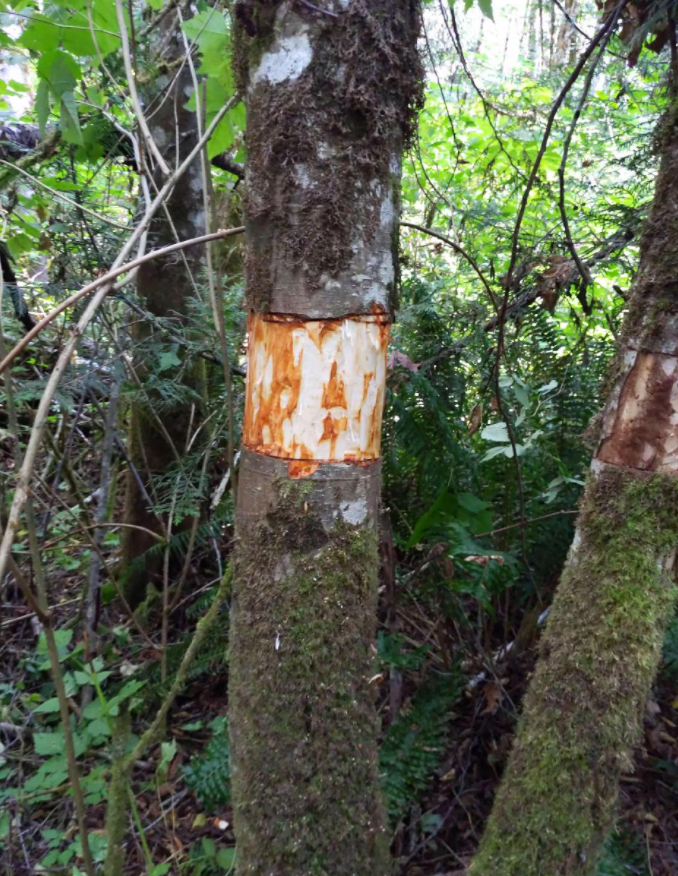For the past 3 months, GPC’s stewardship team has been creating wildlife habitat on our preserves through a procedure called girdling. Our goal is to create snag and den trees, features that are relatively rare in many of GPC’s evenly-aged forest preserves.
In older forests, standing dead trees (snags) and logs are common and provide critical resources for Pacific Northwest wildlife – almost half (40%) of forest vertebrate species are dependent on dead wood, in one form or another. Think of the pileated woodpecker, that chisels out its characteristic rectangular shaped cavities from dead trees.
These resources in dead trees are used by secondary cavity nesting species that do not excavate their own cavities. Secondary cavity nesters include chickadees, wrens, owls, swallows, mergansers, squirrels, martins and bats.

Snag creation adds structural complexity to this individual tree – notice the vertical scar wound along the trunk which already provides important wildlife habitat value. The tiny but extremely vocal Pacific wrens often nest in hollowed trunk cavities such as this.

The only live part of a tree’s trunk is just beneath the bark and comprised of a thin layer of cells known as the cambium. The cambium cells allow the tree trunk to expand and grow thicker. Girdling, or killing a tree without felling it, occurs when this layer of cells is severed in a ring around the entirety of the trunk.
By increasing the number of standing snags and logs (once they fall), we are enhancing two basic wildlife needs (food and cover) which should help to mitigate some of the environmental stressors facing our wildlife.
If you find yourself walking through one of our preserves and see a tree trunk marked with orange paint, look for horizontal grooves around the diameter of the trunk to see if this is one of the girdled trees.
